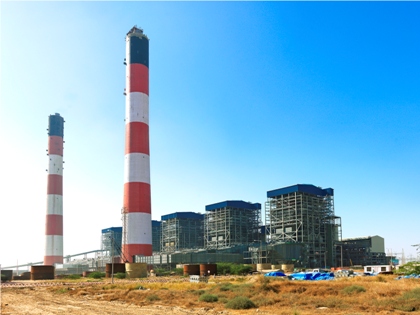It is a matter of irony that while the country the celebrating the success of the tariff-based competitive bidding (TBCB) mechanism in the solar and wind energy sectors in terms of historically low tariffs quoted by developers, the same philosophy is creating turmoil in the conventional power generation and transmission industry.
According to reliable reports, the Supreme Court has disallowed any increase in tariffs from Tata Power’s 4,000-mw Mundra ultra mega power project (UMPP) to be passed on to beneficiary utilities. Tata Power in late 2006 had clinched the Mundra UMPP quoting a levelised tariff of Rs.2.26 per kwh during the 25-year concession period. The tariff quoted by Tata Power was based on long-term negotiated deals signed with Indonesian coal suppliers. However, Indonesia in 2010 ruled that coal cannot be exported at less than market price. The fuel cost for Tata Power shot up, rendering the tariff (of Rs.2.26 per kwh) simply unviable.
Two mega transmission schemes of Reliance Power (Anil Ambani Group) have been under litigation for quite some time now, on the same grounds. Reliance Power had won the North Karanpura and Talcher-II transmission schemes under the TBCB mechanism, back in 2009. Reliance Power has sought revision in tariffs as the company has alleged that work on the projects could not start on time due to non-timely pre-project clearances from the Union government. Reliance Power has sought 160 per cent increase in tariff for the North Karanpura project and 90 per cent in the case of Talcher-II. Beneficiary state utilities have contested this plea and the matter is still sub-judice. The next hearing of the Appellate Tribunal of Electricity (ATE), with whom the matter is now resting, is scheduled on July 12, 2017, for both these projects. Incidentally, Power Grid Corporation of India has stepped in and offered to take over the projects but on conventional “cost-plus” basis, and not under the tariff-based competitive route.
Selling stake
Coming back to the Mundra UMPP case, Tata Power has offered GUVNL 51 per cent stake in Coastal Gujarat Power Ltd (the 100 per cent Tata Power subsidiary that owns the Mundra UMPP) for just Re.1. This will result in CPGL relegating itself to an O&M contractor. GUVNL (Gujarat Urja Vikas Nigam Ltd) is the parent body of all power utilities in Gujarat. It is never going to be easy for power utilities to take over the project and sell power at Rs.2.26 per kwh. The project is designed to run on imported coal; domestic coal will be an inferior alternative from both technical and commercial standpoints.
Adani Power and Essar Power are also saddled with their projects – Mundra (4,620 mw) and Salaya (1,200 mw), respectively – that are based on imported (Indonesian) coal. Both the developers are finding it difficult to sell power at rates contracted in the power purchase agreements. [These projects do not technically fall under the TBCB mechanism but are based on long-term PPAs signed with beneficiary utilities. However, the impact of rising fuel costs on the commercial viability of the power generation asset is the same.]
Also read: Tariff-based bidding in wind energy to gain momentum
The TBCB mechanism has done wonders for the solar industry with tariffs falling to a historical and incredulous low of Rs.2.44 per kwh, as seen in the Bhadla-Phase III project in Rajasthan. Even in the recent 1-GW wind energy auction conducted by SECI, the winning tariffs have been around Rs.3.50 per kwh, much lower than the Rs.4-6 per kwh band seen in the feed-in tariff regime. The biggest advantage that solar and wind projects have is a complete insulation from the vagaries of fuel cost. Despite this, experts believe that such aggressive quotations have been submitted with an underlying desperation to bag projects. Solar developers have set up large teams but the flow of projects has not been much slower than anticipated.
What next?
Based on the cases under discussion, it appears that the TBCB regime is going through a rough patch. While the developer does his homework in quoting the winning tariff, there is always room for unexpected developments that can make financial calculations go awry. Agreed that developers fully subscribe to the project risk but what happens when a developer is confronted by a totally unanticipated situation that makes the tariffs unviable? This is more so considering that the concession periods are long—25 to 30 years. Although concession agreements provide for force majeure, not all eventualities can qualify.
The power projects of Tata, Adani and Essar under discussion are stuck in a policy logjam, and there is no easy way out. It is a tragedy that technically efficient power generation projects are becoming victims of commercial inefficiency.
The tariff-based competitive bidding mechanism, a sound philosophy of power procurement implemented in the country since January 2011, needs some rethinking. Right now, the Central government appears to be distancing itself as issue is strictly between the power generator, the procuring state government utilities, and the lending institutions. While this is understandable, the Centre could do well in reworking the nuances of the otherwise sound tariff-based competitive bidding mechanism, protecting the long-term interests of all stakeholders.

